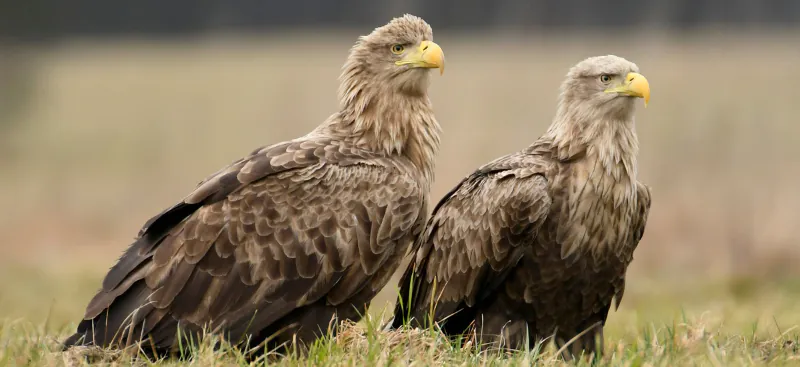Top 10 Most Endangered Birds in the UK
The conservation status for many of our beloved birds is becoming increasingly concerning, as more are being added to the Red List of the UK Birds of Conservation Concern than ever before. Here we take a look at ten endangered UK birds that have landed on the UK Red List. Some familiar faces you will be surprised to see, and other beautiful birds many didn’t even realise live in the UK.
But first- what even is the Red List? If you have a special place in your heart for wild birds, you may have already come across the term but still not know the full details of how birds end up on it. Let's quickly go over it.
What is the Red List for birds?
The Red List covers bird species in the UK, Channel Islands, and the Isle of Man facing a critical decline. It encompasses both rare species like white-tailed eagles and capercaillie, as well as familiar birds like house sparrows and starlings, which have experienced significant population declines.
The first UK Birds of Conservation Concern (BoCC) report was published in 1996. Approximately every six years, experts from various nature and conservation organisations, including the RSPB, collaborate to update the report.
How do birds get on the Red List?
Endangered birds in the UK can be included in the Red List for various reasons. For instance, puffins are listed due to their declining populations worldwide, while swifts and house martins are added because of severe declines in their breeding populations, specifically in the UK.
The following are the criteria for adding a bird to the Red List:
- Threatened with global extinction.
- Experienced a significant historical decline in population within the UK since 1800.
- Breeding numbers in the UK have decreased by at least 50% over the past 25+ years.
- The breeding range in the UK has contracted by at least 50% over the past 25+ years.
White-tailed Eagle
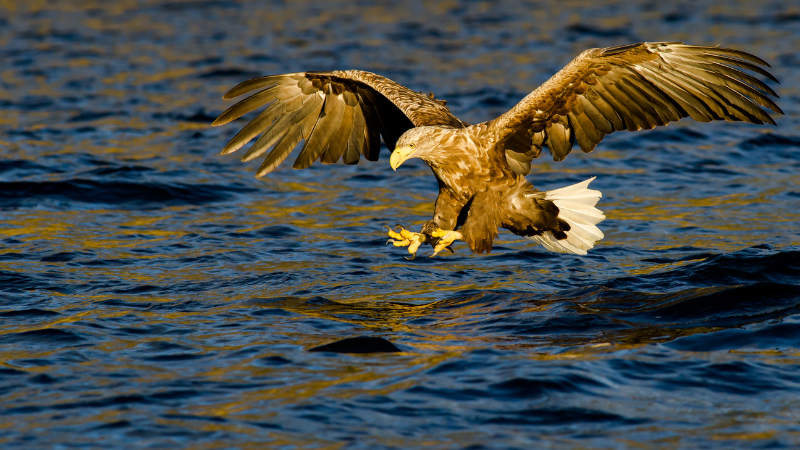
The UK white-tailed eagle, also known as the sea eagle or the Erne, is a large bird of prey that is native to the United Kingdom. It is one of the largest eagle species in the world.
They have a wingspan that can exceed 2 meters (6.5 feet), and they have a distinctive appearance with broad wings and a long, wedge-shaped tail. They have predominantly brown plumage, with a white tail and a pale head and neck. Adult birds have a yellow beak and bright yellow eyes.
Why are white-tailed eagles in decline?
Historically, white-tailed eagles were once widespread in the UK, but they became extinct in the early 20th century due to habitat loss, persecution, and egg collection. Efforts to reintroduce these magnificent birds began in the 1970s, and the first successful reintroduction took place on the Isle of Rum in Scotland in 1975. There are now around 150 breeding pairs in Scotland. Because of this small number, the white-tailed eagle still remains on the Red List.
Starling
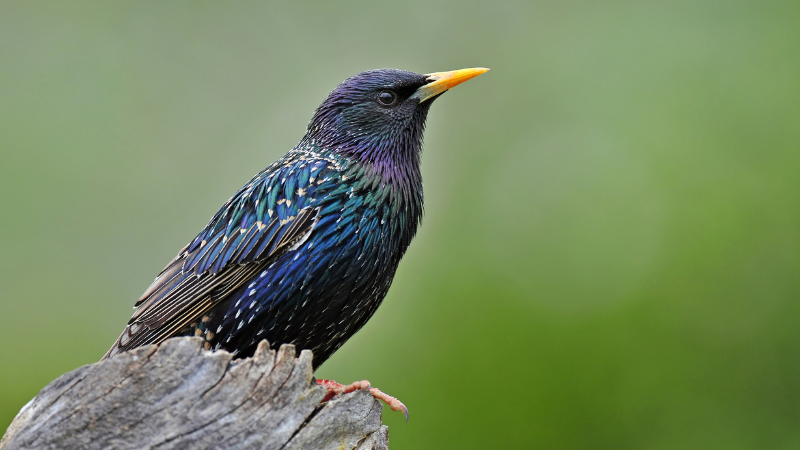
Next on the list of endangered birds in the UK is one you may be surprised to see. A starling bird, is a medium-sized songbird that belongs to the family Sturnidae. They have a compact, stocky body with glossy black feathers, speckled with iridescent purple and green. Starlings can be found across the UK and are especially known for their aerial acrobatics during flocking displays known as murmurations. Starlings feed on a diverse diet that includes insects, straight seed, peanuts and bird suet.
Why are starlings in decline?
It's hard to believe that starlings are on the Red List. One starling is usually followed by what seems like hundreds of starlings- all fighting at the feeders to get a beak full of bird food. But over the period of 25 years leading up to 2014, the breeding population of starlings has significantly declined by 70% and 83% since 1969. This decline is believed to be primarily caused by a decrease in the survival rates of young starlings.
Capercaillie
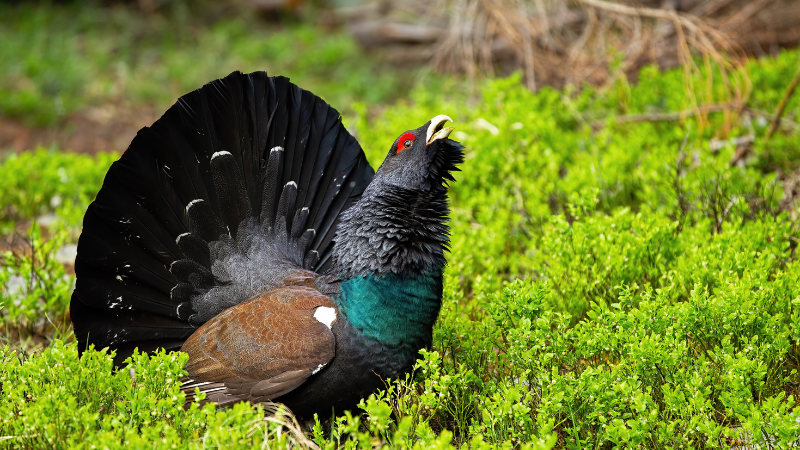
The capercaillie is a large bird species that belong to the grouse family. It is a woodland bird known for its striking appearance and unique courtship displays. In the UK, you will only find them in the Scottish Highlands.
Male capercaillies are particularly notable for their size and appearance. They have dark plumage with a metallic green sheen, and their breast feathers have a beautiful iridescent pattern during the breeding season. Females, on the other hand, are smaller and have a mottled brown plumage, providing effective camouflage.
Capercaillies prefer mature coniferous forests and rely on these habitats for both feeding and nesting. They primarily feed on leaves, buds, berries, and other plant material.
Why are capercaillies in decline?
Their population has faced significant declines, with only 542 individual capercaillies remaining in Scotland. This is a reduction of around 50% from the previous survey, putting the population at real risk of extinction. Conservation efforts have been implemented to protect and restore suitable habitats, manage predator populations, and monitor the remaining capercaillie populations. The growing list of species experiencing critical decline is the wake-up call we all need to make more changes that can help prevent certain birds from becoming extinct. By simply putting out a regular supply of clean water in a shallow bowl and keeping your bird feeders full, you have already played an enormous part in helping your local wildlife.
Turtle dove
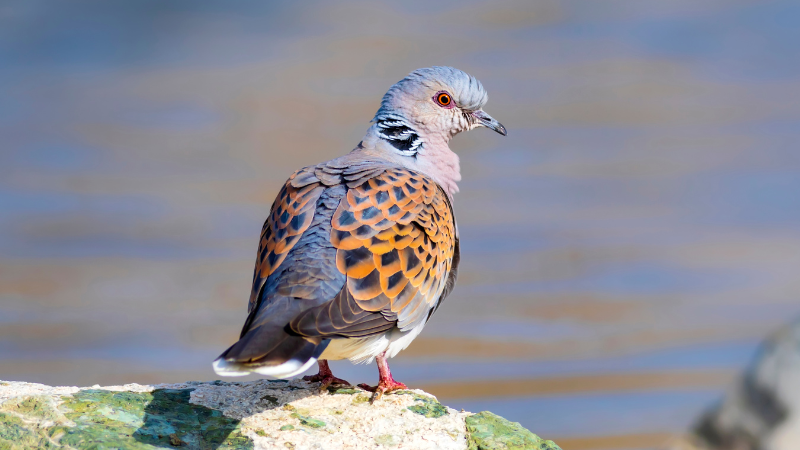
Did you know turtle doves are Europe's only long-distance migratory dove?
Turtle doves are small, elegant birds with slender bodies and long tails. They spend the winter in sub-Saharan Africa and migrate to the UK and other parts of Europe during the summer breeding season.
These birds prefer open woodlands, hedgerows, and farmland habitats, where they feed on various seeds and suet for birds. They also consume small invertebrates, especially during the breeding season when protein-rich food is essential for rearing their young.
Why are turtle doves in decline?
Turtle doves have declined by 93% since the 1970s. Factors contributing to their decline include habitat loss, reduced availability of suitable nesting sites, changes in farming practices, and a decrease in food resources. So if you see a turtle dove at your full bird feeder, give yourself a pat on the back because you have just helped a species in decline.
Puffin
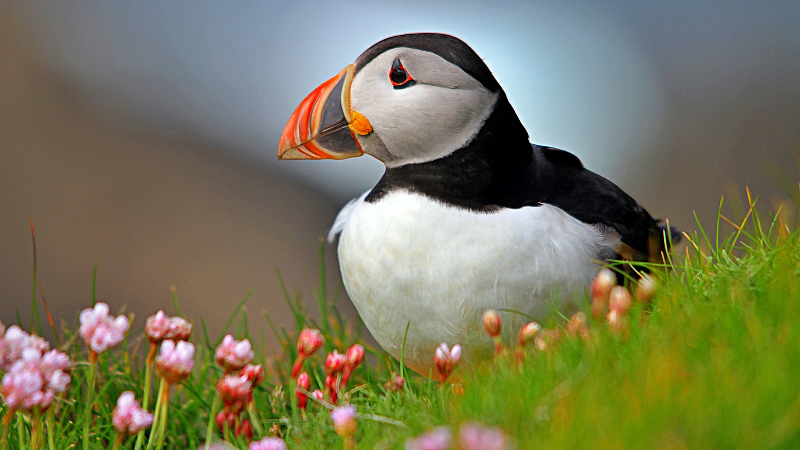
The Atlantic puffin is a species of seabird and a member of the auk family. They have a compact body with a black back, white underparts, and a black crown. Its most distinguishing features are its brightly coloured triangular bill. These birds spend most of their lives at sea, in the North Atlantic Ocean. During the breeding season, puffins return to coastal cliffs and islands such as Flamborough Cliffs, Handa Island, Isles of Scilly and Skomer.
Atlantic puffins are known for their excellent diving abilities. They can dive to significant depths in search of prey, using their wings to "fly" underwater and propel themselves through the water. Puffins primarily feed on small fish, such as sand eels and herring, as well as crustaceans and other marine invertebrates.
Why are puffins in decline?
Atlantic puffins face various threats, including habitat degradation, climate change, overfishing impacting their food sources, and predation. All these factors have contributed to their decline in population by over 80% since the 1970s.
Ptarmigan
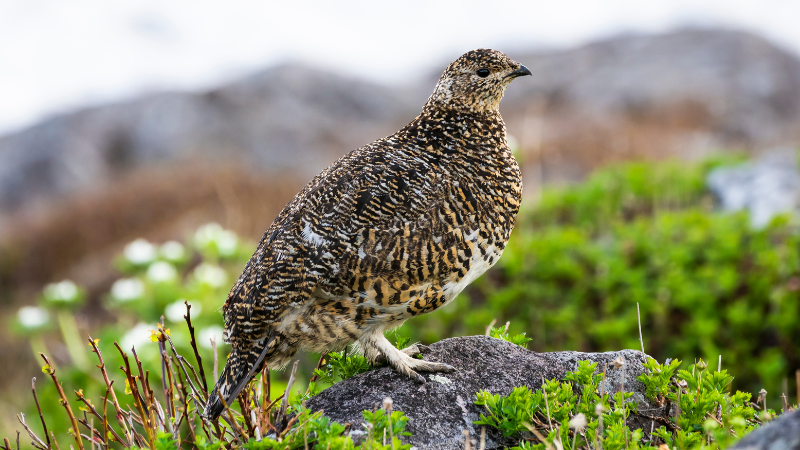
A ptarmigan is a gamebird that belongs to the grouse family and is well-adapted to living in the cold and alpine habitats of the highlands of Scotland. These birds have feathered legs and feet, which provide insulation and help them walk on snowy or uneven surfaces. They also have feathered nostrils that help warm the air they breathe during cold weather. Ptarmigans are known for their seasonal camouflage, which helps them blend in with their surroundings. During winter, their plumage is predominantly white, allowing them to camouflage against the snow. In spring and summer, their plumage changes to a mix of brown, grey, and black, blending with the rocky terrain and vegetation.
Why are ptarmigans in decline?
Ptarmigans are herbivorous and primarily feed on leaves, buds, twigs, berries, and other plant matter. They have faced an 81% decline in numbers since 1961, though the reason for this significant drop is unknown due to the lack of formal surveys.
House Sparrow
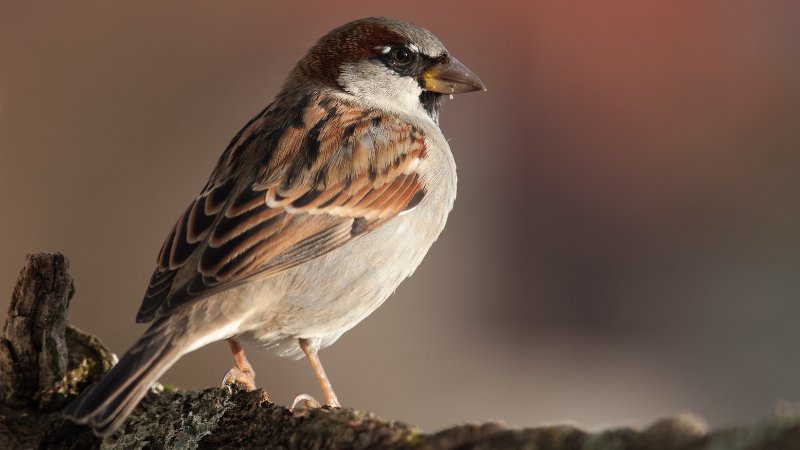
Another familiar beak you may have spotted in your garden is the house sparrow. These small size birds measure around 14cm in length and have plump bodies, short tails, and a stout beak. Male house sparrows have a grey crown, black throat patch, and chestnut-coloured nape. Females have a more subdued appearance with brownish-grey plumage.
These birds are highly adaptable and can be found in a wide range of habitats, including gardens, parks, farmlands, and urban areas. They are often seen near human habitation, taking advantage of food sources and nesting sites provided by buildings and structures.
House sparrows primarily feed on seeds, suet, and insects. They are known to visit bird feeders and often gather in small flocks to feed.
Why are house sparrows in decline?
The UK house sparrow population has shown a significant decline in recent decades, particularly in urban areas. The reasons for this decline are not entirely understood but are thought to be related to changes in urban landscapes, loss of nesting sites, reduced food availability, and changes in agricultural practices, which is why it's important to keep our bird feeders full and put-up nest boxes for sparrows.
Swift

The common swift is a migratory bird species native to the United Kingdom and other parts of Europe. Swifts are known for their swift and agile flight, hence their name. These birds have streamlined bodies with long, curved wings and a forked tail. They are mainly dark brown or black, with a pale throat and underparts. Swifts have a short, wide beak, and their eyes are relatively large.
Swifts are summer visitors to the UK, arriving in late April or early May from their wintering grounds in Africa. They spend the breeding season in the UK, building their nests and raising their young. They feed on flying insects, catching them in mid-air using their wide gape.
Why are swifts in decline?
The swift population has experienced significant declines in recent decades, primarily due to habitat loss and changes in nesting opportunities. Modern buildings with sealed eaves and renovations that remove gaps and crevices have limited suitable nest sites for swifts. To support the recovery of swift populations in the UK, we encourage our customers to install swift nest boxes and design buildings with swift-friendly features.
House Martin
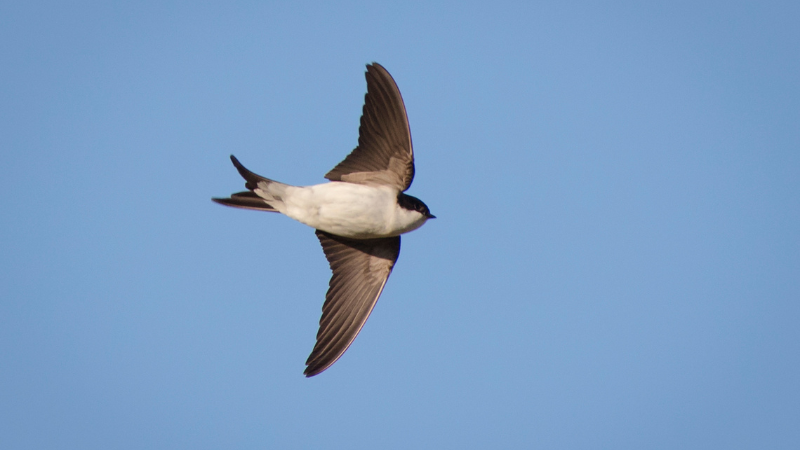
UK house martins are small migratory birds. They are known for their distinctive appearance and behaviour, and you'll have the best chance of spotting them in the UK during the summer months.
House martins have streamlined bodies with a slightly forked tail. They are primarily black on the back and wings, with a white underside. They are similar in appearance to swifts but can be distinguished by their white rumps.
House martins feed on flying insects, such as flies, bees, and ants, which they catch in mid-air using their wide beaks. House martins often fly in small groups, swooping and diving as they search for prey.
Why are house martins in decline?
Due to habitat loss, lower nesting opportunities and changes in agricultural practices reducing insect prey availability, house martins have experienced a population decline of 60% since 1970. If you would like to give house martins a helping hand, place a house martin nest cup in your garden. You can plant more flowers and foliage in the garden to increase insect activity, meaning more food for house martins and other birds.

